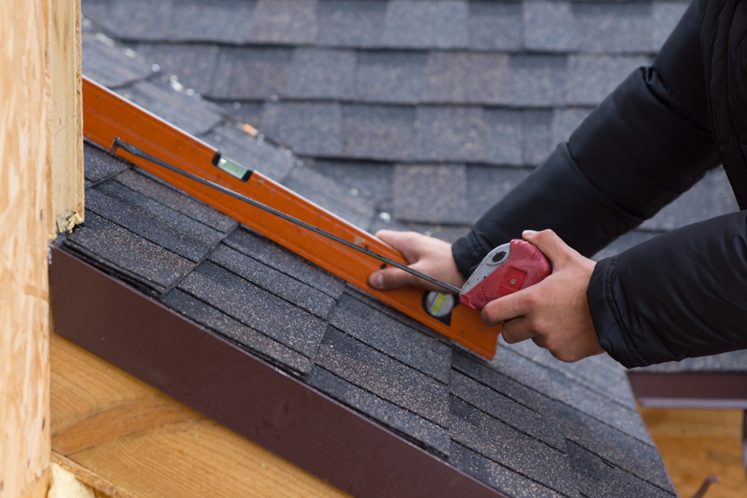Is It Time for Roof Inspection? Here’s How Often Yours Should Be Inspected
Many homeowners don’t consider a roof inspection until they notice prominent signs of wear. You could spend between $300 to $1,100 on roof repairs. In more dire cases, you may have to spend $3,000 or more. To replace a roof, you’re looking at $7,000 or above.
However, you can prevent needless repairs with a routine inspection. For most roofs, you should have a professional inspect it at least twice a year.
A professional will provide a detailed report of your roof’s condition, including red flags that you should know about. Then, you can spend money on small repairs instead of bigger repairs in the future.
This article will highlight why you should inspect your roof routinely. Let’s dive in.
Roof Types
Roof inspection intervals depend on what type of roof you have. Roof inspection times break down as follows:
- Asphalt, Wood, and Composite Shingles: You should get an inspection every three years.
- Metal Roofs: Inspect metal roofs every two years.
- Tile Shingles: Consider a roof inspection every five years.
Tougher roofs can go without inspections for longer periods, but the underlying materials can degrade faster. To be on the safe side, inspect your tile roofs every two years.
The Importance of a Regular Inspection
A professional inspection is necessary because you could incur underlying damage to your roof and not know it. For instance, hail damage can damage asphalt shingles and cause water leaks.
You may not notice the problem until the water begins forming in your ceiling. However, a hail damage roof inspector can conduct a comprehensive inspection after hail storms or any other type of severe weather.
If left untreated, small roof leaks can lead to extensive water damage, wood rot, and mold contamination.
Severe weather aside, rain from regular thunderstorms can do more damage than you think. Any type of moisture that seeps below the surface of your roof can cause heavy damage.
The moisture can disrupt the integrity of the roofing materials and lead to expensive complications. That said, a roof inspection report can outline moisture issues that should be on your radar. From there, a specialist can recommend the necessary steps to fix the problem.
Maintain Your Roof’s Lifespan
Asphalt shingles and composite roofs can last around 20 years. Tile, copper, and slate roofs can last 50 years or more. Wood shake roofs should last 30 years.
Regardless of the roof type, you can prolong the longevity via regular inspections. Without consistent inspections, roof degradation can shave years off your lifespan.
In worst cases, roof wear could cut your roof’s lifespan in half. Consider the following hazards that can lower the lifespan of your roof:
- Overgrown trees and falling branches
- Old chimneys
- Algae and moss
- Missing/broken shingles
- Missing/breached caulk or sealant
- Hanging/damaged gutters
- Rain pools that sit on your roof
To find hazards on your roof, use a ladder find to conduct a DIY inspection.
DIY Roof Inspection
A professional inspection is the best measure, but you should also inspect the roof on your own. When finding a roof leak, walk around your property to check for damaged or missing shingles.
Missing and damaged shingles are the main causes of roof leaks. In particular, look at the granule levels on the shingles.
The granule levels consist of the shingle’s texture. Texture loss means the shingles cannot protect your home against severe weather and rain.
Moreover, check the quality of your chimney, as a degraded chimney indicates a degraded roof. Also, clear away debris in the form of moss, algae, or leaves. Any type of piled debris can form water pools.
Additionally, clean your gutters regularly to ensure proper drainage. Clogged gutters can lead to water pools forming on your roof. Over time, the weight of the water pools will weigh heavily on your roof and cause leaks.
Inside the home, check your ceiling for water stains that indicate roof leakage. If you have an attic, look at the ceilings to find water breaches.
That said, conducting a DIY roof inspection on your own has some notable cons:
- It’s dangerous: Many homeowners don’t have the training necessary to inspect a roof safely. Moreover, using a ladder to inspect your roof is a dangerous task.
- Homeowners don’t have the equipment to inspect roofs thoroughly: Most homeowners don’t have the same tools and equipment as professional inspectors have. For example, a roofing professional can conduct a drone roof inspection to obtain a more resolute profile of a homeowner’s roof.
If you suspect roof damage, hire a roof inspector to further assess the damage.
The Cost of a Roof Inspection
In many cases, professionals will offer a free roof inspection. Over time, however, you’ll pay a regular fee. When it comes to roof inspection costs, the average is between $118 to $300.
Overall, most homeowners end up paying around $200 for an inspection. With that, the cost shouldn’t be the primary concern when hiring a contractor. Find a roofing specialist who is certified and has a good reputation.
DIY vs Professional Roof Inspection
When it comes to a professional or DIY roof inspection, the two aren’t mutually exclusive. Have a roofing contractor inspect your home at least two times a year.
In between inspections, inspect the roof on your own. You can spot damage by inspecting your shingles, inspecting your chimney, and checking your ceilings.
Above all, check your home after a thunderstorm or any other form of intense weather. Water and hail can damage roofs faster than many homeowners realize.
Interested in reading more content? Read more on our blog to learn about other topics.

